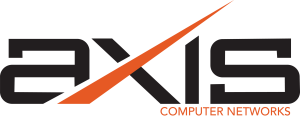IT Projects and Strategy
Let Us Help You
We’ve done this a few times before, and we know how projects come together.
When planning for the future, it’s best not to rush headlong into things. After all, a seamless transition to a next-generation network, a new system of tools using the latest technology, or migrating servers into a virtual infrastructure is key to the continued success and growth of your business—without hiccups, half measures, or other holdups.
At Axis, we know what options are out there for your business, and we do the research to see how the choices you make will fit together. We’ll also show you what we find out to help you make an informed decision.

If you’re thinking about a new network and want help planning for the kind of growth you expect, we can help you plan your entire IT strategy. We will help you visualize the entire network and server architecture and implement the entire plan. It can be as simple or complex a network job as you like—whether everyone needs a new workstation or they need a whole new network to connect them all together.
We can also help you think about other changes your business may need to make, whether it’s a physical move to a new space or upgrades to the infrastructure, from the servers and workstation hardware. We can show you how to consider your cloud-computing options, or figure out the best way to transfer your business to a new Internet provider.
Axis can evaluate the products and services you will need, and take the mystery out of why option X is less expensive than option Y in the short term, but neither are as good as Z at any price, and we’ll tell you why.
We can even help plan for the disasters you dread and have the recovery plan in place.
Strategic Planning for IT Is More Important Than Ever
Recently, developments in technology have come faster than ever, and, even more importantly, the widespread adoption of these changes has also accelerated. While the available technologies often improve processes and system efficiency and may even change the allocation of resources, they can force the pace on small to mid-size businesses that may not want to incorporate every step of the technology as it shifts into ever higher gears. This is particularly true when the budget for IT investment may not have been planned for abrupt updates and changes, and even forward-thinking managers may be caught unawares.
The key to an effective IT strategy is to pair it closely with the overall strategic plan for the business. If these two plans stick together, there will be a reduced need for sharp changes in direction down the road. So it goes without saying, that if the business strategy undergoes a review in Q3 to adjust projections, then the IT strategy should also have a close look. This means more than just a line item on a budget spreadsheet getting cut (or increased) with all the other cost centers as projections bear themselves out. Or, even worse, having the IT budget not included in those moves, as it needs to be given ample consideration on a regular basis.
What Are the Best Practices for IT Planning and Strategy?
If a company has an IT strategic plan—and this is especially true for a small to midsize company—they’re already way ahead of the curve. Now comes the hard part. Instead of just writing the plan, sticking it in a folder called “IT Strategic Plan” and calling it a day, the plan should live on your desktop, and be open more than it’s closed. That’s because plans are executed by people, and people remember what they want, and, the corollary to that, they forget (conveniently) what they don’t want to remember or think about. Here’s how to come up with a plan for any business, and use it for what it is: A roadmap to success. Here are the best practices to follow to develop and use your plan most effectively:
1. Don’t Plan IT in a Bubble
IT planning has to be considered beyond the dollars and cents. Don’t just look at a wish list of technologies that you want to implement and then base your plans on how much money is allocated. Instead look at the IT plan as an integral part of the roadmap for the business for the coming year, two years, five years. If the business plans that far ahead, the IT must too. And when the business plan is reviewed in light of changes in the market and shifts in the economy (when have we ever seen those?), it’s a good idea also to review the IT strategy, preferably with the same people involved. Only then can a team get full buy-in on a plan, with all the nuance and what-ifs accounted for and considered.
2. Trust the Process
If a business has an existing IT plan, it’s best to keep it close at hand when developing the next version. Even if the former plan was written by a predecessor, it has value as a comparison of what was planned versus what was implemented, all the better for the obvious analysis of hindsight. There are reasons for everything that was included in that plan, whether or not the thinking that went into it is still valid today, it’s important to consider the whys of what was included.
3. Don’t Leave Out the Key Points, But Don’t Wait Either
A strategy needs to include the details that make it all work, and so it should be comprehensive. Existing and prospective partnerships should be outlined, as should personnel, organizational details, and requirements. Any plan needs a timeframe to move forward. Also, if there are gaps, fill in as well as possible, but don’t dwell on them until the rest of the plan becomes outdated—instead come back and fill them in later.
4. Don’t Overthink It
If you approach the plan for what it is, a strategy for how technology can help the business achieve its goals, then the plan should come together rather quickly. Think about it. It’s human nature: The more time a team invests in developing a plan, the less willing it will be to deviate from it—so much for being able to pivot nimbly when circumstances change. Instead the team should write the plan quickly based on facts and good assumptions, and revisit it soon to adjust as needed, and always in conjunction with the plan for the business.
5. How Do You Measure Success?
Good question. Smart managers choose their indicators and track them. When they adjust their plans, they have numbers to review, and can understand why targets were hit or missed. The adjustments should help to hit those goals, or allow different indicators to be measured as the mission has changed.
At Axis Computer Networks, we’ve helped many small and mid-size businesses create clear IT strategies for the near and long term, understanding their technology needs and helping them plan for growth in a world of changing circumstances and shifting goals. Let us help with your plans so your investment in technology lets you achieve your goals more quickly and efficiently.

Case Study — IT Projects and Strategy
Introduction: The Efficiency of Technology
Every company that uses anything from a computer network to individual workstations or laptops can benefit from analyzing the costs associated with the systems in place. Computers are in an excellent position to help a business to review the efficiencies and costs surrounding their employees and systems, and we aren’t just referring to the costs of hardware and software, the network and Internet access. The network and information systems can help any manager review all aspects of the business.
As we know, any management team who plans any kind of business strategy for one department without considering the whole business is looking for trouble. But the health of the network and information systems can hold up a mirror to the entire business.
One client of ours became very aware of this idea when they reviewed their business and understood real costs as opposed to perceived expenditure.
The Challenge
Managers in any business do not like to spend money unnecessarily. That’s why budgets are created, predicting the sales and expenditures needed to support the company. But what business managers often can’t see, chiefly because they don’t go looking for it, is the exorbitant cost of not spending IT money. What do we mean by that? Well it’s the hidden inefficiencies in the system that many companies put up with for so long that they just become considered to be “the cost of doing business.”
If a business has a staff of ten employees, and they’re all working on outdated, substandard systems, money is being lost. The business is not upgrading because the management team looked at the cost and determined that it would be too much money. The expenditure is just too great an expense for the business to bear, and besides, the system is still running, and everyone can still do their jobs.
Expenditure on hardware is usually an issue, since it is a relatively large upfront cost to purchase the hardware that is guaranteed to become obsolete over time. Managers who use this argument to justify avoiding the expenditure invariably fail to look at the flipside of it: the equipment their team is using every day has become obsolete.
The same goes for a network server. The hardware can put in good service and last a long time, but has it matched the company’s growth? Consider this example: We now have a sales team of twenty active users where there were ten users just four years ago. And we’ve added a CRM system that they all are required to use daily, and many of them use their devices to interact with customers through various apps and scheduling tools.
Everything is working, so why tinker with it?
Another factor comes up more often than many would believe. When potential clients and IT managers talk about upgrades, they share their experiences and it becomes apparent that there’s a definite anxiety surrounding large capital expenditures for hardware and software. That’s because their current IT services provider often creates more problems than they solve, and upgrades are a major headache. The clients have to plan on downtime around the implementation, but also create contingency plans around unforeseen problems that arise.
The Solution
When one considers the challenges, it’s no wonder the status quo suits many companies just fine. But as mentioned above, managers don’t like to spend money, for obvious reasons: Unnecessary expenditures eat into profits. That money could be better spent elsewhere, such as on additional staff or benefits. And even if a company has extra money available, hardware and software are a bad investment, since they will eventually become obsolete—that’s guaranteed.
In truth, all of these factors can be addressed by a smart IT strategy. If a company’s managers look at IT strategically, they can consider the realistic lifespan of its equipment and upgrade regularly, avoiding the threat of obsolescence. And the resulting staff efficiency could result in not requiring new personnel, since the other team members can work more effectively, and are less prone to burnout since their workstations function (almost) as fast they do, and they don’t have that agonizing wait between functions while the processor and the network connection catch up.

Perhaps most importantly, the initial spend may sound like a lot of money, but in fact it will result in savings. Managers can begin to calculation just how much they will save by taking a look at the payroll of their staff and figuring out how much slower the existing technology makes their respective workdays. The loss of efficiency begins when they boot up the machine each day. If it takes each employee ten minutes of start time (as opposed to five minutes or less on a new computer), multiply that time by number of employees by the number of workdays in a year (the accepted number is 261 working days per calendar year). And that savings is realized before the work even begins.
Granted this is a simplification of the calculation, but in truth, many hardworking people have become accustomed to delays, workarounds, and other band-aid fixes just to keep up with their workload. In fact, a new machine may have the effect of refreshing a staff, communicate that management cares about them and their lives on-the-job experiences, and may inspire creative thinking and fresh ideas from sources who have been focused primarily on getting through the day.
At Axis Computer Networks, we take a consultive approach to every client. There’s no one-size-fits-all solution, and we take the time to speak to the managers and IT staff and understand the needs of each company we encounter.
- We can review the age of the components and look at their capabilities, while also considering how they fit with the needs of the team.
- Understanding the various software programs used and how they interact on certain platforms may help us solve some challenges, even before recommending an upgrade.
- We can help show your managers how to plan an upgrade and create a budget that works best for your needs, spelling out what should happen this year and what can wait.
- Planning is something that should be reviewed regularly and we can help with that too, helping to make sure targets are being met and offering flexible, creative solutions.
Summary
Efficiency shows up on spreadsheets, provided those running the business are willing to take a hard look at what’s really happening. With a strategic IT plan in place, a company can look at its technology as an investment, rather than an expense, and use it to pull its own weight and, even better, support the other investments: people, products, and service.
Contact Axis Computer Networks today to discuss your IT strategy.
